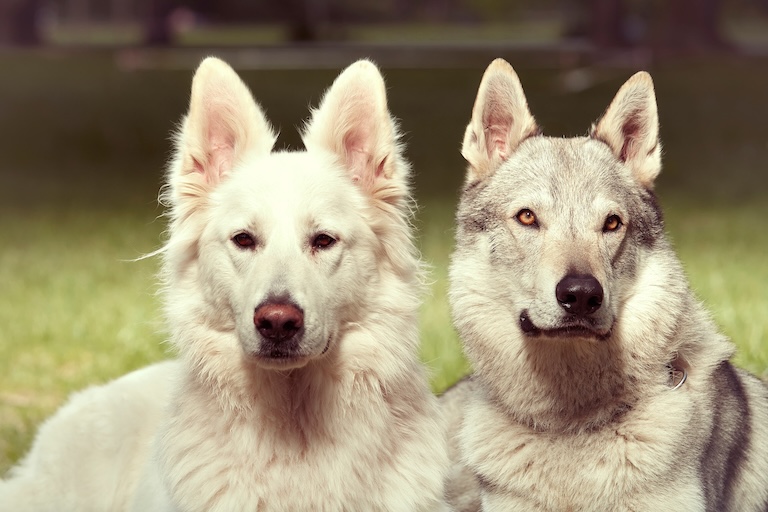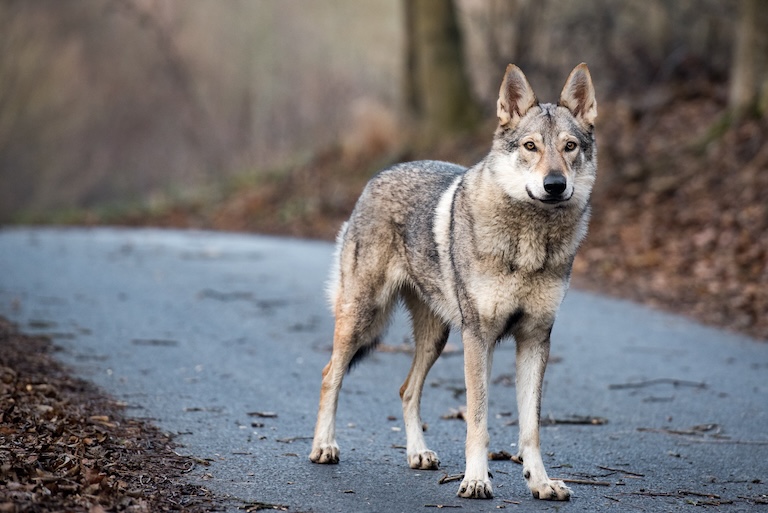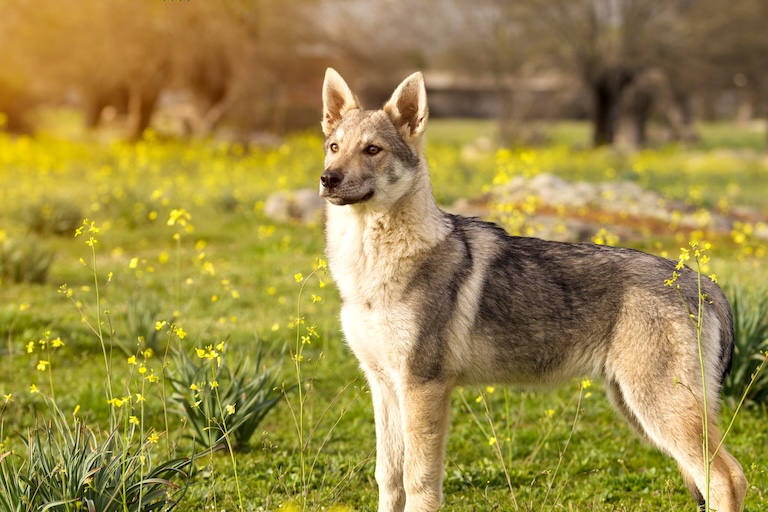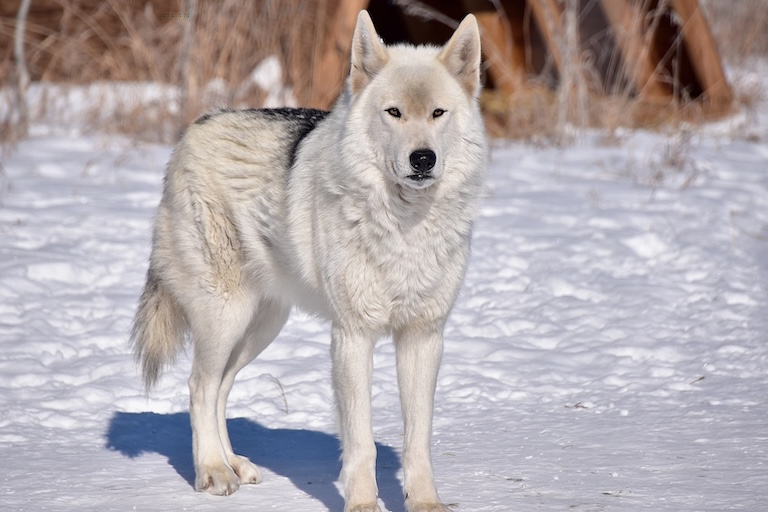Wolfdog Profile
What do you get when you mix one part dog with one part wolf, but the dog is 100% wolf, and the wolf is also 100% wolf, and there’s no way to tell how much dog is really in it?
A wolfdog! At least, sometimes. Wolfdogs are every poser’s dream companion, but their wolfiness, as it turns out, was bred out of them for a reason.

Wolfdog Facts Overview
| Habitat: | Mostly domestic |
| Location: | Worldwide |
| Lifespan: | Up to 15 years |
| Size: | 75cm (30 in) tall |
| Weight: | Up to 45 kg (100 lb) |
| Colour: | Varied, often grey with markings of the dog breed it came from |
| Diet: | Little piggies and kibble |
| Predators: | None |
| Top Speed: | Unknown, varied |
| No. of Species: | 1 |
| Conservation Status: | Not Listed |
Dogs are a funny lot. Each of them, from the ratty little snapper in a Floridian’s purse to the dignified giant guarding Namibian livestock from cheetahs, are members of the same subspecies: Canis lupus familiaris.
This means, that if you can get them to fit together, you can make more healthy dogs out of them. But it goes further than this.
The species Canis lupus is the grey wolf, so not only can you breed two totally different dogs together, either of them has as much affinity for making babies with a wild wolf.
And so, that’s what some people do. A dog is a wolf that’s been bred for thousands of years away from its wolfy ancestry, and a wolf-dog, or wolfdog, is a dog that’s had a little wolf injected into it relatively recently.
Interesting Wolfdog Facts
1. They’re probably not hybrids
Pretty much everything about Wolfdogs is up for debate, including this. A hybrid, as the wolfdog is often called, is normally a mix between species. With animals, at least.
There’s an argument to be made that botanical varieties – organisms of the same subspecies but with different traits – can be hybridised.
But when it comes to animal breeding, the term refers to a mix of genes much further separated; in zoology, we don’t abide by any of that planty nonsense, and taxonomy ends at the subspecies level.
There is some debate as to how many generations from a wolf an animal has to be to be considered a dog, and this also complicates things.

In essence, though, a wolfdog is any breed of domestic dog (though usually a wolfy-looking one, like a GSD or Malamute) recently interbred with another animal with wolf genes in it. Such as a wolf, or wolfdog.
The purpose is usually an interest in getting back to the wild ancestor of the dog and assuming that this is a good idea for some reason. And it’s not a new idea. 1
2. They’ve been around for a while
Pre-Hispanic ruins in Mexico show signs that dogs were being crossed with wolves as far back as 2000 years ago. The attitude appears to have remained the same: these were a symbol of toughness and status as a badass and were associated with warriors.
The trouble is, there’s no strong genetic test you can run to establish whether an animal is a wolfdog, because technically all dogs are wolves already.
And this is why, when someone claims to have a wolfdog, they’re often wrong. 2
3. Often, they’re not
Setting aside the people who commonly make stuff up about this sort of thing, there’s also a group who get tricked by paperwork that states their dog is part wolf.
Lots of dogs can be bred to look very wolfy, and this has a lot to do with them being made of wolves in the first place, but this isn’t the same as a wolfdog. Breeders selling “hybrids” can take advantage of the lack of rigour to sell what they claim is a wolfdog that’s actually a common cross of popular breeds.
But even when a dog has recent wild wolf genes, the amount needed, and the effect this has on the offspring is a total gamble. 3
4. They can be a lot or a little
Generally, there is a spectrum of low to high content of wolf in a wolfdog. As you’d expect, a high-content wolfdog has more wolf than dog in it, and this is often expressed in being a lot more wolfy in appearance and behaviour. Low-content wolfdogs are the opposite, and just have a touch of the wolf in them.
This is a pretty subjective measure unless you’re breeding a pure wolf with a pure domestic dog. Genetic testing to see how much wolf is in a dog isn’t accurate, and there are no reputable registers to track their breeding, so it’s generally a guess based on the phenotype.
Even vets aren’t trained to pick them apart, so knowing how much you’ve got can be a real challenge. But having a wolf in your dog is a challenge in itself.

5. They’re not good pets
There’s a reason that dogs were domesticated. The process took what is essentially a powerful wild animal and bred into it a desire to please and listen to people.
Being undomesticated means that wolves grow up pretty hard-headed and stop paying attention to the desires of humans when they reach maturity. This is a bad thing when those desires include not being torn to pieces and generally living in safety.
An uncontrolled dog has a high potential to become dangerous. An uncontrolled wolf is likely to be far worse. Wolves are powerful predators, and hugely intelligent, and in order to get them on our side, we bred a lot of that out of them.
So, putting it back in is a lot like retrofitting your car with a steam engine and driving it around your apartment: very cool, very impractical, and possibly explosive.
Wolfdogs are commonly associated with skittish behaviour, escape artistry, intense destruction of property, lots of howling, lots of mischief and occasional attacks on people and animals.
6. They’re often killed
As a result of all this, they’re banned in many places and are routinely killed when brought in. To make matters worse, since there’s little you can do to confirm a wolfdog, plenty of honest crossbreeds that happen to look like wolves get caught in the crossfire.
In all, wolfdogs are a bit of an abomination. Dogs and wild wolves are both cool in their own right. Wolves belong in the wild, and dogs are great in the home; there’s really no need to complicate things.

Wolfdog Fact-File Summary
Scientific Classification
| Kingdom: | Animalia |
| Phylum: | Chordata |
| Class: | Mammalia |
| Order: | Carnivora |
| Family: | Canidae |
| Genus: | Canis |
| Species: | lupus |
Fact Sources & References
- “About Wolf-dogs”, WolfPaws.
- (2010), “Experts: Ancient Mexicans crossbred wolf-dogs”, boston.
- “Is your “Wolf-Dog” really a Wolf Dog? How to tell :)”, Windstone Editions.
